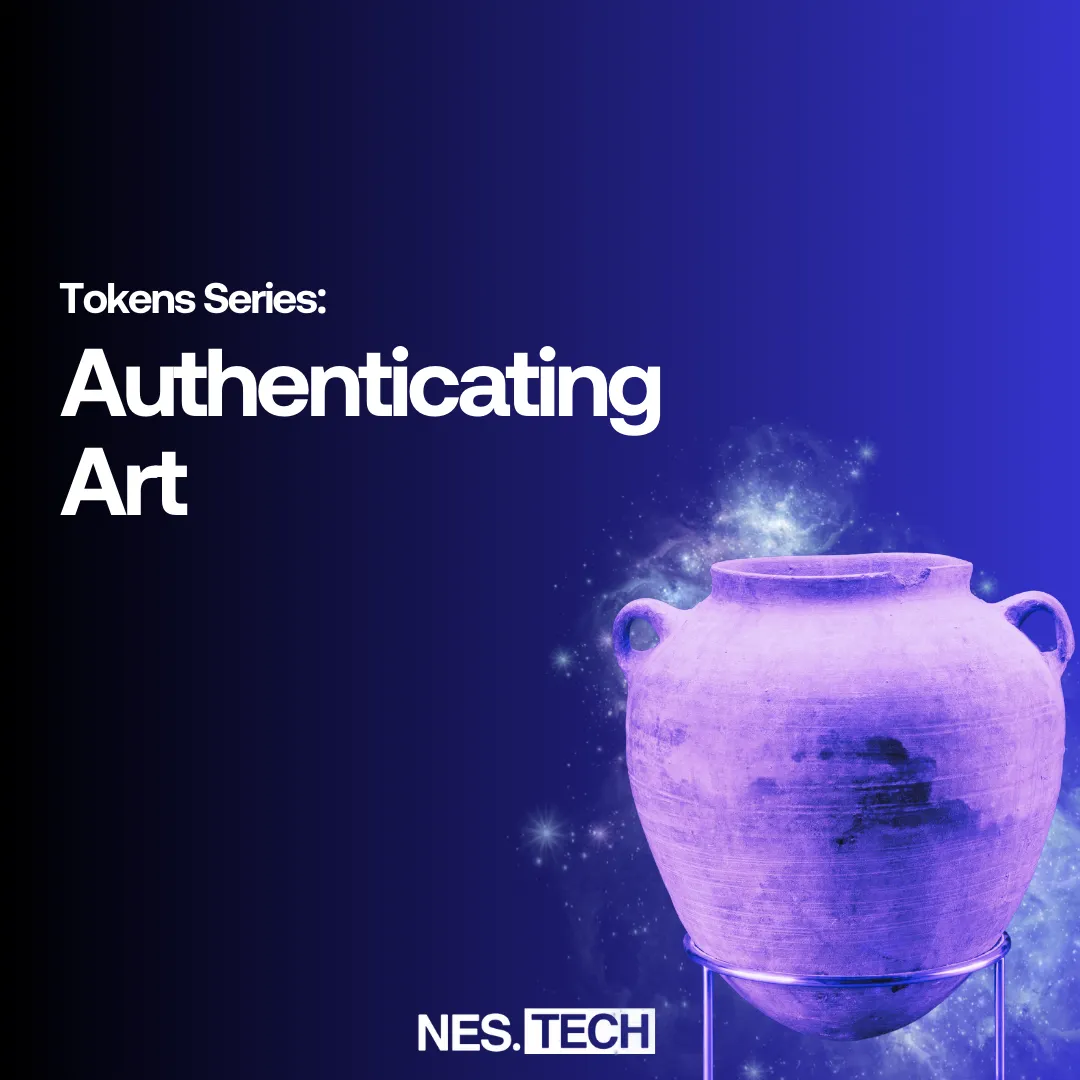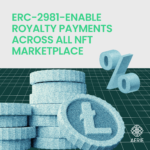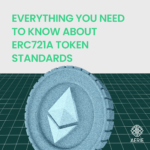The Excellent Role of Blockchain in Authenticating Art

Have you heard the tragic story of the artist known as Qinni? It’s a tale that shines a spotlight on the dark underbelly of the booming world of NFTs and raises important questions about the authentication of art in the digital age.
Qinni, whose real name was Qing Han, was a rising star in the digital art world. Her stunning illustrations, often inspired by the Japanese anime series Cardcaptor Sakura, garnered a massive following on social media, with millions of admirers enchanted by the vibrant colors and intricate details in her work. However, tragedy struck when Qing was diagnosed with Stage 4 cancer, setting the stage for a heart-wrenching battle that would ultimately claim her life at just 29 years old.
In the wake of her untimely passing, Qing’s art became a precious memory of her life. Her brother Ze Han, himself an artist, took it upon himself to preserve her legacy, maintaining her social media accounts for her devoted fans.
The Disturbing Twist
As the popularity of NFTs surged, a concerning development emerged. Frauds and scammers began to exploit Qing’s artwork, creating NFTs without permission and profiting from her creations after her passing. The digital wild west of NFTs had reared its head, leaving Qing’s family and admirers in a state of helplessness. This heartbreaking story highlights the urgent need for better authentication in the world of digital art.
This problem is not an isolated tale. Artists worldwide are facing the issue of having their works minted into NFTs by others, whether they are deceased or alive, in what is clearly an act of theft. Herein lies a paradox: the blockchain, often seen as a tool for ensuring digital ownership and authenticity, is also a stage for this unfolding drama.
Can Blockchain Truly Authenticate Art?
In the age of digital art and Non-Fungible Tokens, the boundaries between authenticity and exploitation are increasingly blurred. A compelling question then comes to the forefront: Can blockchain technology offer a robust solution to the pressing challenges faced by artists like Qing Han and the countless others grappling with unauthorized minting of their creations?
Blockchain, often lauded as the guardian of digital ownership and authenticity, possesses the inherent potential to play a pivotal role in addressing these complex issues. It’s a technology known for its transparency and immutability — qualities that could redefine how we verify the authenticity of digital artworks. Whenever an artist creates a masterpiece, it can be irrefutably recorded on a blockchain, forging an indelible path back to its origin.
Moreover, blockchain has the capacity to introduce smart contracts into the art ecosystem, automating royalty payments for artists whenever their work changes hands. This not only guarantees fair compensation for creators but also promotes legitimate sales while discouraging unauthorized duplicates. It’s a significant step forward in ensuring that artists and their estates continue to reap the benefits of their creations, even long after their passing.
The Blockchain Authentication Process
So, how exactly does blockchain authenticate art? Back to basics, blockchain is a decentralized, tamper-proof ledger. When an artist creates art, they can “mint” it into an NFT, essentially turning it into a unique digital asset. This process involves registering the artwork’s details, like the artist’s name, title, and other relevant information, on the blockchain.
Once the NFT is minted, it’s like giving the artwork a digital birth certificate. This certificate is stored on the blockchain, and it becomes a permanent, tamper-proof record of the artwork’s authenticity.
Now what if someone tries to create a fake NFT of the same artwork? Well, this is where the blockchain’s transparency shines. Every NFT is linked to the original blockchain record, and anyone can trace back the ownership and provenance of the NFT. If a copycat tries to pass off a fake, it won’t have the legitimate blockchain history that the original possesses.
And remember those smart contracts we mentioned earlier? They play a very important role. Artists can embed specific conditions in these contracts, such as receiving a percentage of the sale price every time the NFT changes hands. This ensures artists continue to benefit from their work, and it’s all automated through the blockchain.
Now, the Caveat…
While blockchain technology holds immense promise for authenticating art and securing its provenance, there’s a critical point to consider: not all blockchains are inherently interoperable. Meaning, they may not seamlessly communicate or exchange data with other blockchain networks.
This lack of built-in interoperability among various blockchain networks poses a big challenge to the seamless authentication of art, especially when artworks are minted on different blockchains. It’s like trying to make two different languages fluently communicate without a translator.
When artists mint their works on blockchains that do not support interoperability with others, it can complicate the process of establishing a universally recognized certificate of authenticity. Artworks authenticated on one blockchain may not readily connect with the broader art market or other ecosystems unless specific measures are taken.
This limitation has real-world implications for artists, collectors, and the art community at large. Artists who wish to reach a broader audience and ensure the longevity of their art may find it challenging to navigate multiple blockchain ecosystems. Collectors may hesitate to invest in art authenticated solely on a blockchain with limited interoperability, as it may restrict the resale or transfer of their acquisitions.
Navigating Blockchain’s Interoperability Challenge
Each blockchain, from Ethereum to Tezos, operates its own distinct ledger with its own version of NFT standards. Yet, interoperability is the bridge that connects these isolated islands. For example, a piece of art minted on Ethereum might find its way to Flow through cross-chain NFT platforms. These platforms employ smart contracts that verify and record the artwork’s journey across blockchains, ensuring the provenance remains intact, no matter where the art calls home.
- Cross-Chain Bridges are systems designed to facilitate the smooth movement of assets or data between distinct blockchain platforms. As the name suggests, they act as bridges, connecting one blockchain to another. Notable projects like Polkadot, Cosmos, and Chainlink are leading the charge in constructing these bridges, essentially knitting together multiple blockchains.
- Interoperability Protocols like Polkadot’s Substrate, Cosmos’ Inter-Blockchain Communication (IBC), and AION are meticulously engineered to unlock seamless communication between different blockchains within their respective ecosystems. They serve as the digital translators that enable these diverse blockchains to converse with one another.
Guarding Art’s Future with Blockchain
The saga of Qing Han eloquently underscores the vulnerabilities artists encounter in the digitized ecosystem of art. How, then, can blockchain serve as the cornerstone for protecting the integrity and legacy of artworks in this new era?
Blockchain’s strength lies in its unequivocal ability to offer transparency and permanence. By engraving the genesis of an artwork onto a decentralized ledger, the technology creates an immutable lineage that firmly anchors the artwork’s authenticity. This is more than a protective measure — it’s a declaration of the artwork’s provenance, an undisputable testament to its true creator.
The introduction of smart contracts into the art world’s vernacular goes beyond simple authentication. These self-executing contracts, built on the blockchain, can be programmed to allocate royalties automatically, ensuring artists or their estates receive their rightful share from subsequent sales. This mechanism ushers in an era of equity and integrity, actively preventing the proliferation of unauthorized reproductions.
AERIE, a pioneering platform in the realm of bulk minting and tokenization, brings a new advancement in this space with its innovative AI check feature. This tool cross-examines newly submitted artworks against an extensive database, encompassing both NFT and traditional art. The AI check’s vigilant algorithm is designed to detect and prevent plagiarism, ensuring that each piece is a genuine original before it is allowed minting and tokenization on the blockchain. AERIE represents a leap forward in proactively protecting artists’ works and securing their digital legacy.
As we venture further into this rapidly evolving domain, platforms like AERIE exemplify the growing sophistication of tools at our disposal. This evolution paints a hopeful picture of a domain that respects and upholds the sanctity of artistic creation. With the technology to protect and preserve creativity becoming better and easier to use, the digital art space is lighting up with possibilities.









